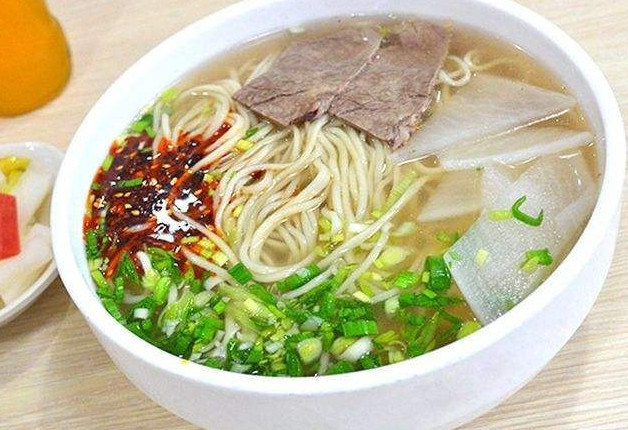Fenghuang Ancient Town
Nestled against the Tuojiang River and surrounded by mountains, Fenghuang Ancient Town is like a pearl scattered by god. The authentic Chu culture, the melodious Fenghuang local language, the richly ornamented Miao costumes, the delicious minority food, the primitive local operas, the original batik and silvers, and the charming hills and clear rivers form a picturesque scenery. Inside the town, you will find about 68 old buildings, 116 ancient ruins, 120 exclusive residences from Ming and Qing Dynasties, 20 paths paved with stones and slabs. Let’s discover the charm of this small town!
 |
| Fenghuang Ancient Town |
History of Fenghuang Ancient Town
Legend has it that a phoenix once flew over the place and found it so beautiful that it decided to live here forever. Therefore, people regard the place as the Fenghuang
 |
| Fenghuang Town |
Highlights of Fenghuang Town
Boating on Tuojiang River
 |
| Boating on Tuojiang River |
Tuojiang River is the mother river of Fenghuang. It has nurtured the town for generations. Let’s take a boat on Tuojiang River and admire the charming city. Drifting down the river, you are presented with the scenes of Wanshou Palace, Wanming Pagoda, Tuocui Tower, old City Wall, towering Gates, and hundred-year-old hanging houses.
East Gate
Located on the east side of City Wall, East Gate is one of the four gates of Fenghuang
 |
| East Gate of City Wall |
Former Residence of Shen Congwen
Shen Congwen, the Father of Native Literature, is a famous litterateur, historian, and antique expert in China. He had many works being translated into English, Japanese, French, etc. Fenghuang was Shen Congwen’s hometown. He spent his early years in the place we are about to visit. Built in 1866, Former Residence
 |
| Former Residence |
Former Residence of Xiong Xiling
In the back alley inside the Wenxing Street, nearby the beautiful Tuojiang River, there is a Miao shingle structure in Siheyuan style, the Former Residence of Xiong Xiling. It’s low but exquisite and rich in Miao architectural characteristics.
Xiong Xiling, from Fenghuang, was very talented in learning. He was very successful in
 |
| Shen Congwen's Residence |
Yang’s Ancestral Temple
Built in 1836, Yang’s Ancestral Temple is a wooden Siheyuan building in the northeast of the town. It’s composed of gates, drama stage, corridors, wing-rooms,
 |
| Yang's Ancestral Temple |
Southern Great Wall
 |
| Southern Great Wall |
The construction of the Southern Great Wall began in 1554 and ended in 1622. The section starts from Tingziguan in the southern and ends at Xiqueying, with a whole length of 191km. It was built to block the trade and cultural communication between Miao and Han people. You can find a pass, barrack, and security post every 3-5 miles along the wall.
Huangsiqiao Ancient Town
Seated 24km from Fenghuang, Huangsiqiao Ancient Town was built in 686 (Tang
 |
| Huangsiqiao |
Qiliang Cave
Qiliang Cave is a classic carbonate cave. It’s composed of Old Battlefield, Gallery,
 |
| Qiliang Cave |
Shanjiang Miao Village
Located in a valley 20km northwest to Fenghuang, Shanjiang Miao Village is a small
 |
| Miao Village |
Things Not to do
- Don’t enter people’s houses without closing your umbrellas.

Miao People - Don’t tread on thresholds.
- Avoid living in a room with the opposite gender when you stay overnight at a local house.
- Don’t sit in the center seat when you visit a local family.
- Don’t make too many contacts with married women.
- Don’t whistle in Miao village (locals people it’s used to summon devil).
Travel Guide of Fenghuang Ancient Town
- Best time to visit: April - October.
- Entrance ticket: 135 RMB/pax.
- Opening Hours: 8:00 - 18:00 (charged sights inside the town), the city itself opens all day.
- Transportation

Miao Village
I. Exterior transportation
By train. You can take a train to Jishou Railway Station and take a local bus or taxi to Fenghuang. Most people visiting with us also travel to Zhangjiajie. Therefore, we often drive guests to Fenghuang, which takes about 4 hours.
II. Interior transportation
Fenghuang is a small town. You can walk the whole city for a few hours. If you want a different way to enjoy the city, riding a boat will be a great choice.
Recommended Itinerary:
7 Days Golden Hunan Tour to Fenghuang, Zhangjiajie and Changsha




Comments
Post a Comment